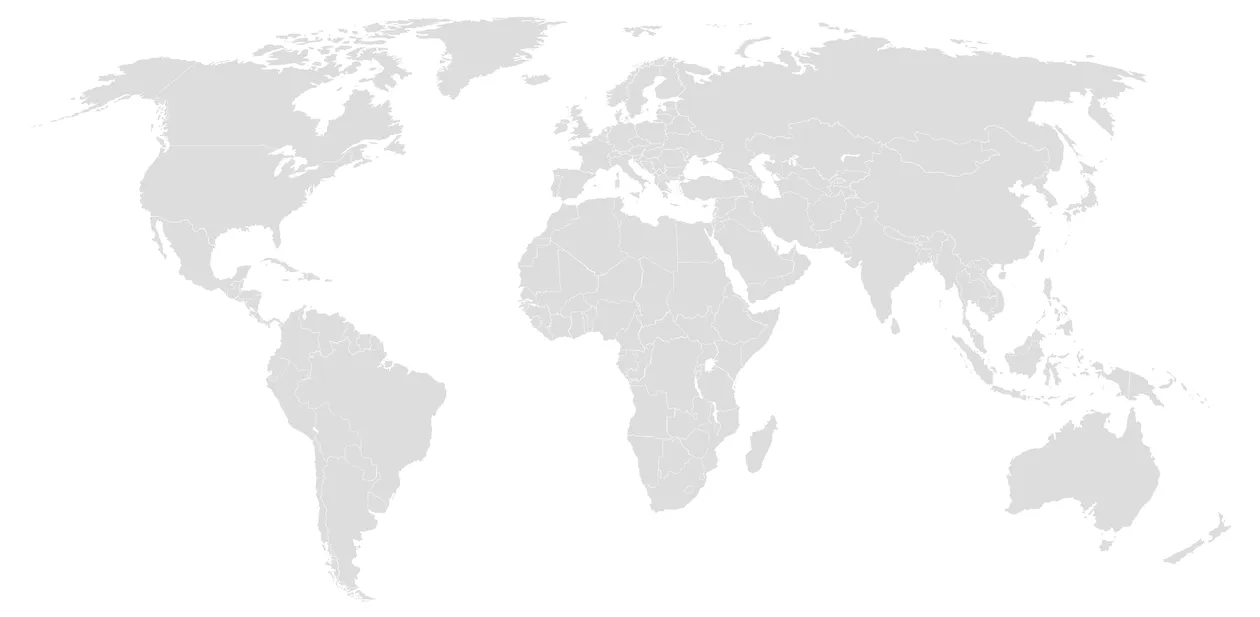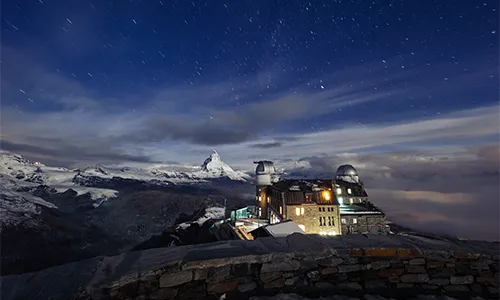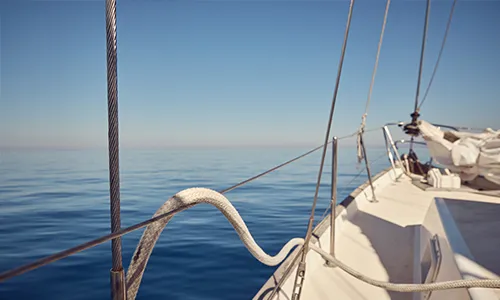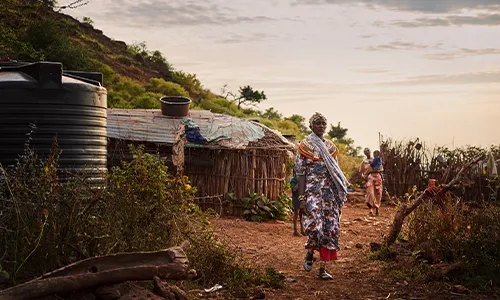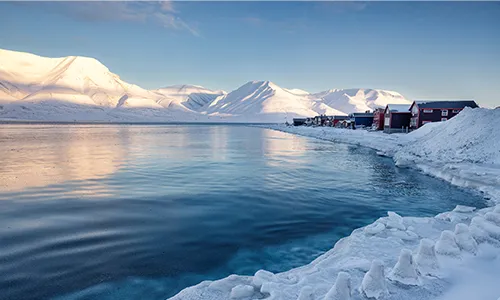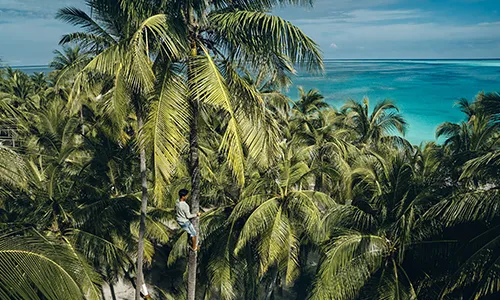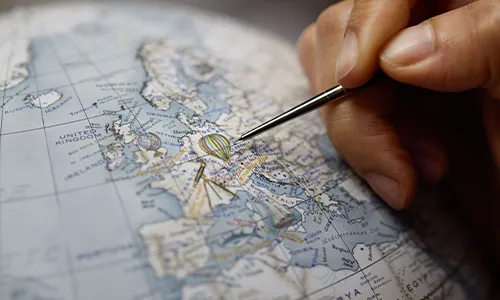The star of South Sea fantasies is an age-old globetrotter

Il re dei frutti troneggia sopra ogni cosa. A venti metri dal suolo si gode le giornate afose dondolando, protetto da foglie di palma che lo avvolgono come possenti ali.
Sua Maestà ha scelto un posto davvero sublime. Dal suo posto d’onore lo sguardo oltrepassa le lagune spingendosi fino al mare, attraversa le paludi e arriva fino alla giungla. Un vento caldo soffia tra le cime degli alberi. Un fruscio. La musica dei tropici.
Se ne sta tranquillo lì in alto, maturando lentamente. Diventa sempre più grande, rotondo, succoso. Il re indiscusso di tutti i sogni tropicali, viaggiatore instancabile, se lo merita. Vive in paradiso, sospeso sopra le spiagge candide tra i Caraibi e la Polinesia.
E cosa saranno mai il mango, la papaya o il frutto della passione? Al confronto con il re, gli altri frutti esotici sono al massimo dei pesi piuma. Robette dolci che crescono su qualche cespuglio. Per non parlare della banana: una cosa storta che pesa a malapena 150 grammi e marcisce in un attimo.
Ma non il re. Quando è in forma, può arrivare tranquillamente a tre chili, e rimane fresco anche dopo aver fatto il giro del mondo via mare. No, la noce di cocco non si lascia impressionare facilmente. È la star di tutte le fantasie esotiche, l’incarnazione di ogni avventura alla Robinson Crusoe. Ecco a voi la Cocos nucifera, l’icona di tutte le piante tropicali.
Il re dei frutti troneggia sopra ogni cosa. A venti metri dal suolo si gode le giornate afose dondolando, protetto da foglie di palma che lo avvolgono come possenti ali.
Sua Maestà ha scelto un posto davvero sublime. Dal suo posto d’onore lo sguardo oltrepassa le lagune spingendosi fino al mare, attraversa le paludi e arriva fino alla giungla. Un vento caldo soffia tra le cime degli alberi. Un fruscio. La musica dei tropici.
Se ne sta tranquillo lì in alto, maturando lentamente. Diventa sempre più grande, rotondo, succoso. Il re indiscusso di tutti i sogni tropicali, viaggiatore instancabile, se lo merita. Vive in paradiso, sospeso sopra le spiagge candide tra i Caraibi e la Polinesia.
E cosa saranno mai il mango, la papaya o il frutto della passione? Al confronto con il re, gli altri frutti esotici sono al massimo dei pesi piuma. Robette dolci che crescono su qualche cespuglio. Per non parlare della banana: una cosa storta che pesa a malapena 150 grammi e marcisce in un attimo.
Ma non il re. Quando è in forma, può arrivare tranquillamente a tre chili, e rimane fresco anche dopo aver fatto il giro del mondo via mare. No, la noce di cocco non si lascia impressionare facilmente. È la star di tutte le fantasie esotiche, l’incarnazione di ogni avventura alla Robinson Crusoe. Ecco a voi la Cocos nucifera, l’icona di tutte le piante tropicali.
Il cocco merita un’attenzione particolare anche per altri motivi. Viaggiava già prima che l’uomo addirittura esistesse. È un avventuriero temprato da tutti i mari. Il giramondo per eccellenza.
Le palme selvatiche esistono da 70 milioni di anni. Le prime sono probabilmente cresciute in Nuova Zelanda, forse anche in Australia o in Colombia. Ma i loro frutti erano troppo impazienti di esplorare il mondo. Così un giorno si lasciarono cadere sulla sabbia, rotolarono tra le onde e si lasciarono trasportare: attraverso i sette mari, fino alle lontane coste dell’Indonesia, fino alle sconosciute isole coralline negli oceani più remoti.




I frutti hanno vagato in mare aperto per mesi. Le noci di cocco possono percorrere migliaia di miglia nautiche, e riescono ancora a germogliare anche dopo molti mesi in acqua salata. Basta che approdino da qualche parte e subito mettono radici, crescono e si trasformano in nuove palme da cocco. È così che il re ha conquistato mezzo mondo, insediandosi soprattutto nelle zone tropicali, in quelle regioni equatoriali che ancora oggi ci fanno sognare quando la voglia di viaggiare lontano prende il sopravvento. Spiagge da sogno di sabbia bianca, lagune fiancheggiate da palme. È in questo regno incantato che vive. Sua Maestà il cocco: la più irresistibile di tutte le tentazioni tropicali.
Poco dopo le sei del mattino, il sole sorge sopra il sud dell’India. La costa del Kerala si risveglia lentamente, i corvi volteggiano sopra la città portuale di Kochi, affacciata sul Mar Arabico. E ci sono palme ovunque: ricoprono metà del territorio. Lo Stato federato indiano sulla costa del Malabar prende persino il suo nome dal re dei frutti. Kerala, infatti, significa letteralmente “terra delle palme da cocco”. E Kochi è considerata la capitale mondiale del cocco.
Le verdi noci vengono offerte praticamente a ogni angolo. Non c’è quasi una bancarella sul mare in cui gli indiani non sorseggino la loro amata acqua di cocco. Un’India senza cocco? Sarebbe come togliere le patate ai tedeschi, i tulipani agli olandesi e gli hamburger agli americani.
Ma il cocco è un cittadino del mondo, amato ovunque. Tahiti. Hawaii. Le baie turchesi tra Bali e Barbados, le spiagge tra Sumbawa e Zanzibar. Il cocco vuole solo il meglio. E non c’è da stupirsi se il frutto di Cocos nucifera continua a farci girare la testa.
Già i poster dei primi piroscafi oceanici erano adornati da imponenti palme. Come soggetto pubblicitario, l’albero tropicale dal collo lungo e dai frutti generosi esercitava un fascino fuori dal comune. Nel 1931 arrivò sul mercato una bevanda chiamata Afri-Cola, nel 1951 la leggendaria barretta di cioccolato di nome Bounty. Bottiglie e confezioni erano decorate con palme stilizzate e noci di cocco a profusione. Ancora oggi la pubblicità continua ad attingere a questo motivo così promettente. Compagnie aeree, pantaloncini da surf, automobili, hotel, biancheria intima, dentifrici, shampoo, gelati, rum e lamette da barba: con questa dolce tentazione è stato pubblicizzato ogni tipo immaginabile di prodotti.
Il frutto tropicale verde è onnipresente. Cosa ne sarebbe di tutti i fabbricanti di sogni senza la palma e la noce di cocco? Se la vedrebbero davvero brutta!

Già i poster dei primi piroscafi oceanici erano adornati da imponenti palme. Come soggetto pubblicitario, l’albero tropicale dal collo lungo e dai frutti generosi esercitava un fascino fuori dal comune. Nel 1931 arrivò sul mercato una bevanda chiamata Afri-Cola, nel 1951 la leggendaria barretta di cioccolato di nome Bounty. Bottiglie e confezioni erano decorate con palme stilizzate e noci di cocco a profusione. Ancora oggi la pubblicità continua ad attingere a questo motivo così promettente. Compagnie aeree, pantaloncini da surf, automobili, hotel, biancheria intima, dentifrici, shampoo, gelati, rum e lamette da barba: con questa dolce tentazione è stato pubblicizzato ogni tipo immaginabile di prodotti.
Il frutto tropicale verde è onnipresente. Cosa ne sarebbe di tutti i fabbricanti di sogni senza la palma e la noce di cocco? Se la vedrebbero davvero brutta!


People in the south of India have little time for such hyperbole. ‘Coconuts are the basis of our livelihood here’, says Arathy Kumani. ‘We utilise the whole plant, the fruit, the husks, the milk, the bark of the tree, the blossoms, the leaves. The coconut palm is endlessly useful.’
Arathy takes visitors by boat through the backwaters, a labyrinth of lagoons and creeks stretching deep into the wetlands of Kerala. The air is heavy, the jungle perspires. Two men punt the boat through the water with bamboo poles. We set off soundlessly into a world where coconuts hang in the sky.
People in the south of India have little time for such hyperbole. ‘Coconuts are the basis of our livelihood here’, says Arathy Kumani. ‘We utilise the whole plant, the fruit, the husks, the milk, the bark of the tree, the blossoms, the leaves. The coconut palm is endlessly useful.’
Arathy takes visitors by boat through the backwaters, a labyrinth of lagoons and creeks stretching deep into the wetlands of Kerala. The air is heavy, the jungle perspires. Two men punt the boat through the water with bamboo poles. We set off soundlessly into a world where coconuts hang in the sky.
Life in the villages follows long-established patterns. Omana Tripathi, 72, is a traditional craftswoman who has been working with coconuts for more than 50 years. Sitting on the ground in front of her hut, she plaits and knots a coconut mat with her bare hands. In India to this day, people use palm leaves to cover their huts, weave walls and make baskets.
Coconut fibres are twisted into rope, which is used to produce sofas and mattresses and to bind sacks. The coconut palm and its famous fruit are a natural resource, a building material and the basis for Asian cooking. Pressed coconut meat yields highly sought-after coconut oil, an ingredient in countless creams and beauty products. The fruit has become an economic asset.
As if that weren’t enough: children play cricket with palm fronds, and the fibres are useful for cleaning your teeth. It’s no coincidence that the coconut palm has been dubbed the ‘tree of life’ in the tropics.

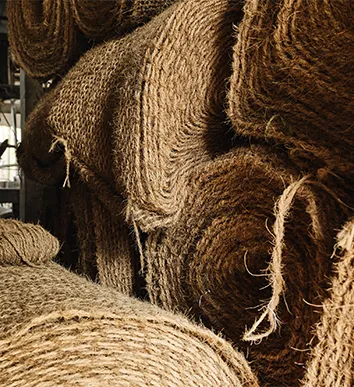

The only thing is: the fruit isn’t easy to get to. We humans may have landed on the moon, invented AI and the smart refrigerator, but there is still no automated way to harvest coconuts, to remove the queen from her tree. Pure muscle power is required: you have to climb up.
In the coastal village of Arthunkal, Tanesh Diwakar, 43, stands at the base of a 20-metre-tall tree. Tanesh is a coconut tree climber, and today, he has his hands full. He thinks there are about 300,000 palms in his district of Alappuzha alone. This means he goes up and down, up and down almost all year round.
Tanesh can manage up to 12 trees in a morning, and each one often contains 20 to 30 coconuts. He shimmies up the trunk like an acrobat, without a net, without a harness, his machete in his belt. Tanesh makes around 1,000 rupees a day, the equivalent of 11 euros. ‘I’ve never been hit by a falling coconut’, he says. ‘Nor have I ever fallen from a tree.’ Luckily for him. If he ever lost his grip, a drop of 10 or 20 metres could be fatal.
The only thing is: the fruit isn’t easy to get to. We humans may have landed on the moon, invented AI and the smart refrigerator, but there is still no automated way to harvest coconuts, to remove the queen from her tree. Pure muscle power is required: you have to climb up.
In the coastal village of Arthunkal, Tanesh Diwakar, 43, stands at the base of a 20-metre-tall tree. Tanesh is a coconut tree climber, and today, he has his hands full. He thinks there are about 300,000 palms in his district of Alappuzha alone. This means he goes up and down, up and down almost all year round.
Tanesh can manage up to 12 trees in a morning, and each one often contains 20 to 30 coconuts. He shimmies up the trunk like an acrobat, without a net, without a harness, his machete in his belt. Tanesh makes around 1,000 rupees a day, the equivalent of 11 euros. ‘I’ve never been hit by a falling coconut’, he says. ‘Nor have I ever fallen from a tree.’ Luckily for him. If he ever lost his grip, a drop of 10 or 20 metres could be fatal.
Tanesh is one of many who earn a living from the coconut palm. In many factories throughout Kerala, men stand in front of spinning wheels and wooden looms producing coconut mats for agriculture and gardening. The mats help to prevent erosion and are used as geotextiles and a substitute for peat. Coconut is big business. More than 60 million tonnes are harvested globally each year and traded on the international market. Coconut milk alone generates billions in sales.
Not that you could tell by the soothing sight of these tall, slender trees crowned by beautiful fronds. But as befits a queen, the coconut palm is worth its weight in gold. There’s even a Coconut Development Board in Kerala and an official World Coconut Day.


To discover the true extent of Her Majesty’s realm, you have to travel even further. Some 500 kilometres from Kochi, in the Indian Ocean, lies the Lakshadweep archipelago – 36 palm-covered islands that seem to float in the water like white discs. Glistening beaches of white coral on which the shadows of palm trees dance. This is Queen Coconut’s natural habitat. The sea of coral has been her home for hundreds of thousands of years.
Life out here on the islands is simple. The equator isn’t far away. Reefs. Sharks. Otherwise, only the sea, fish and coconuts. Everything else has to be brought in by ship.
People walk slowly in paradise, barefoot in the sand. The sun is hot. There is plenty of time. In the evening, the moon rises over the islands, the palm trees silhouetted against the sky. The water is warm, the breeze is balmy. Listen carefully, and you’ll hear something plop onto the sand. Just the way it has for many millions of years. It’s the queen letting go and dropping to the ground.
The sea awaits. Journey, journey – to the ends of the Earth.
To discover the true extent of Her Majesty’s realm, you have to travel even further. Some 500 kilometres from Kochi, in the Indian Ocean, lies the Lakshadweep archipelago – 36 palm-covered islands that seem to float in the water like white discs. Glistening beaches of white coral on which the shadows of palm trees dance. This is Queen Coconut’s natural habitat. The sea of coral has been her home for hundreds of thousands of years.
Life out here on the islands is simple. The equator isn’t far away. Reefs. Sharks. Otherwise, only the sea, fish and coconuts. Everything else has to be brought in by ship.
People walk slowly in paradise, barefoot in the sand. The sun is hot. There is plenty of time. In the evening, the moon rises over the islands, the palm trees silhouetted against the sky. The water is warm, the breeze is balmy. Listen carefully, and you’ll hear something plop onto the sand. Just the way it has for many millions of years. It’s the queen letting go and dropping to the ground.
The sea awaits. Journey, journey – to the ends of the Earth.

Author


Photographer


Aluminium Collection
Travel companion

Discover the world with us
